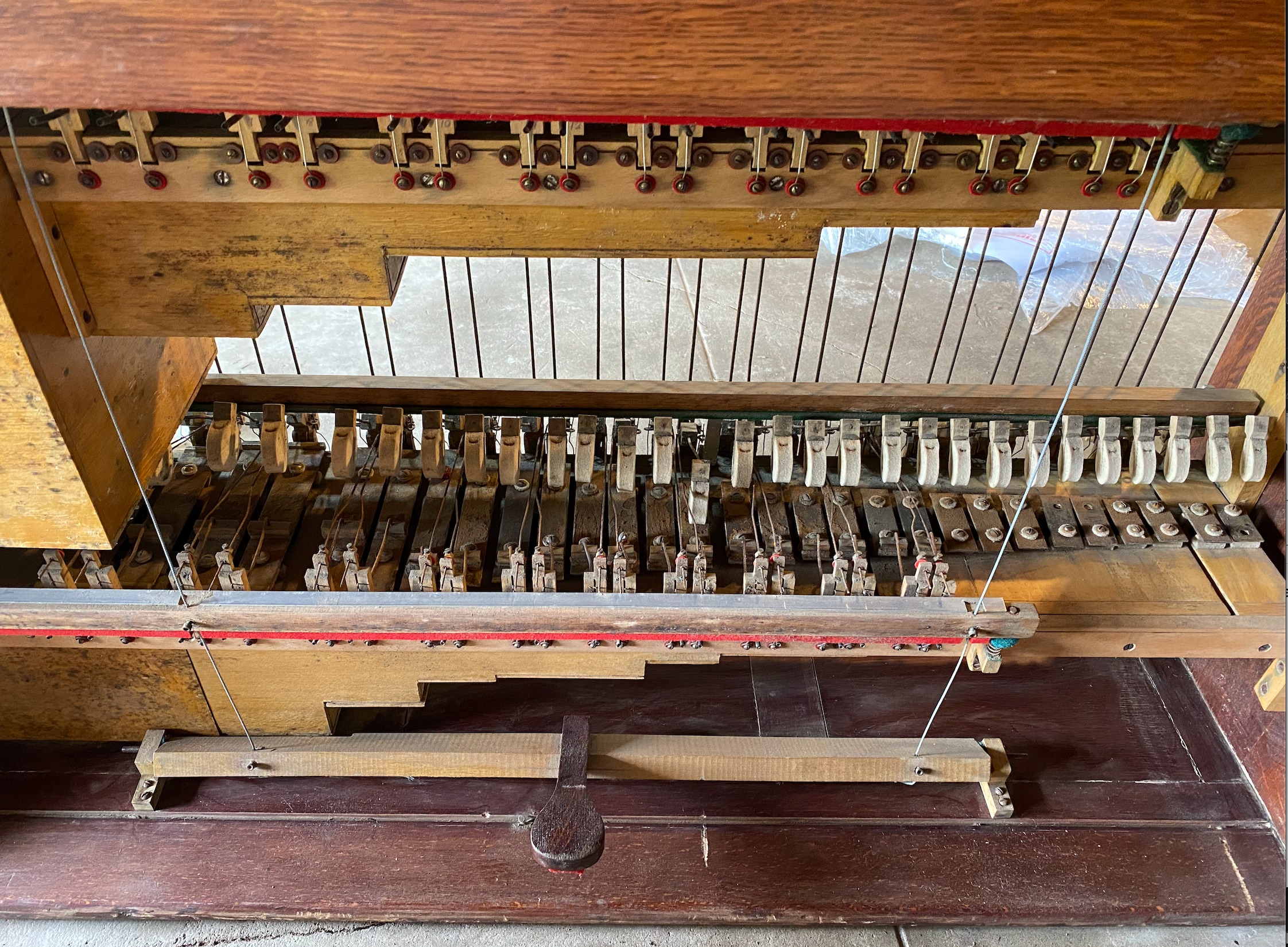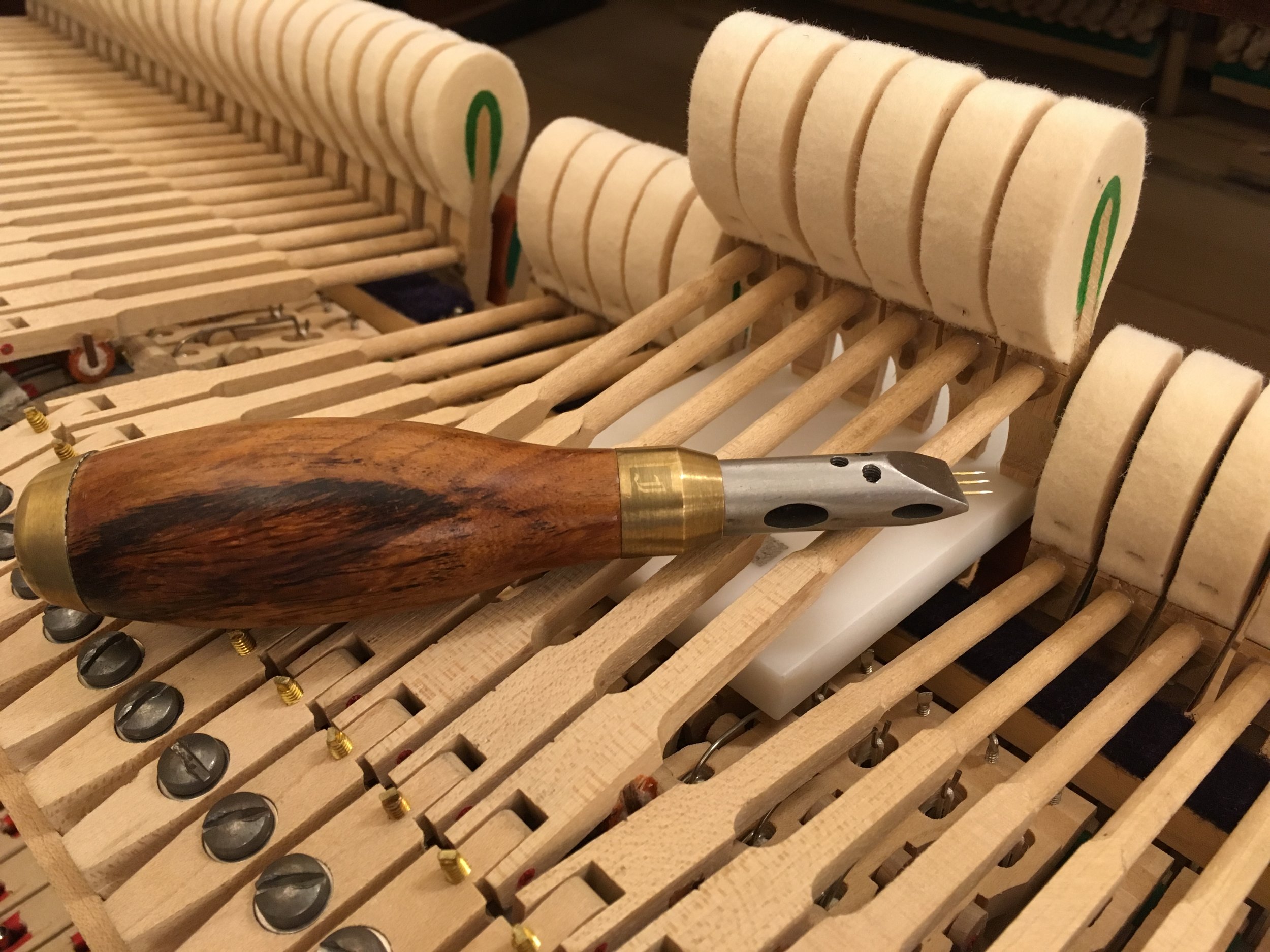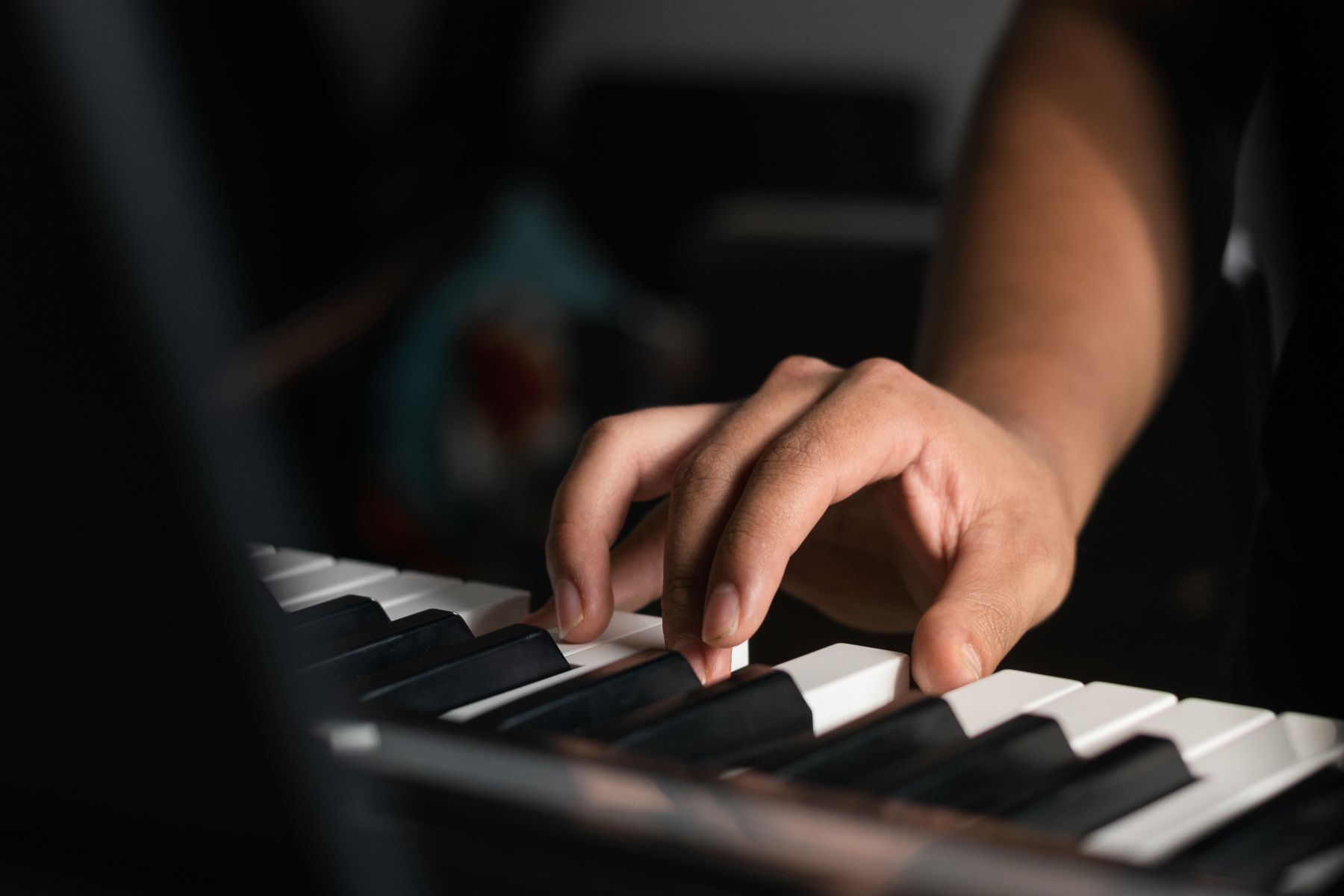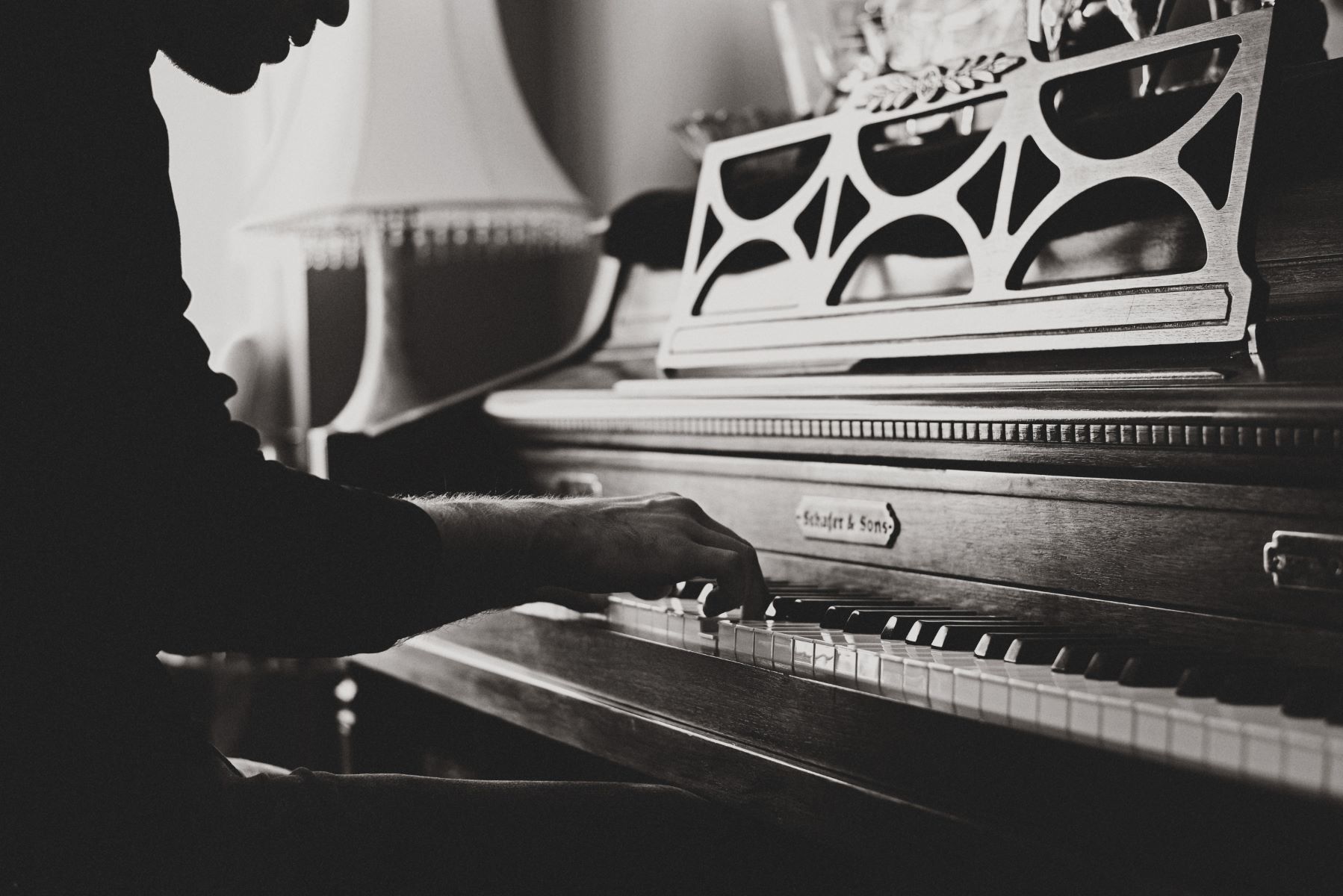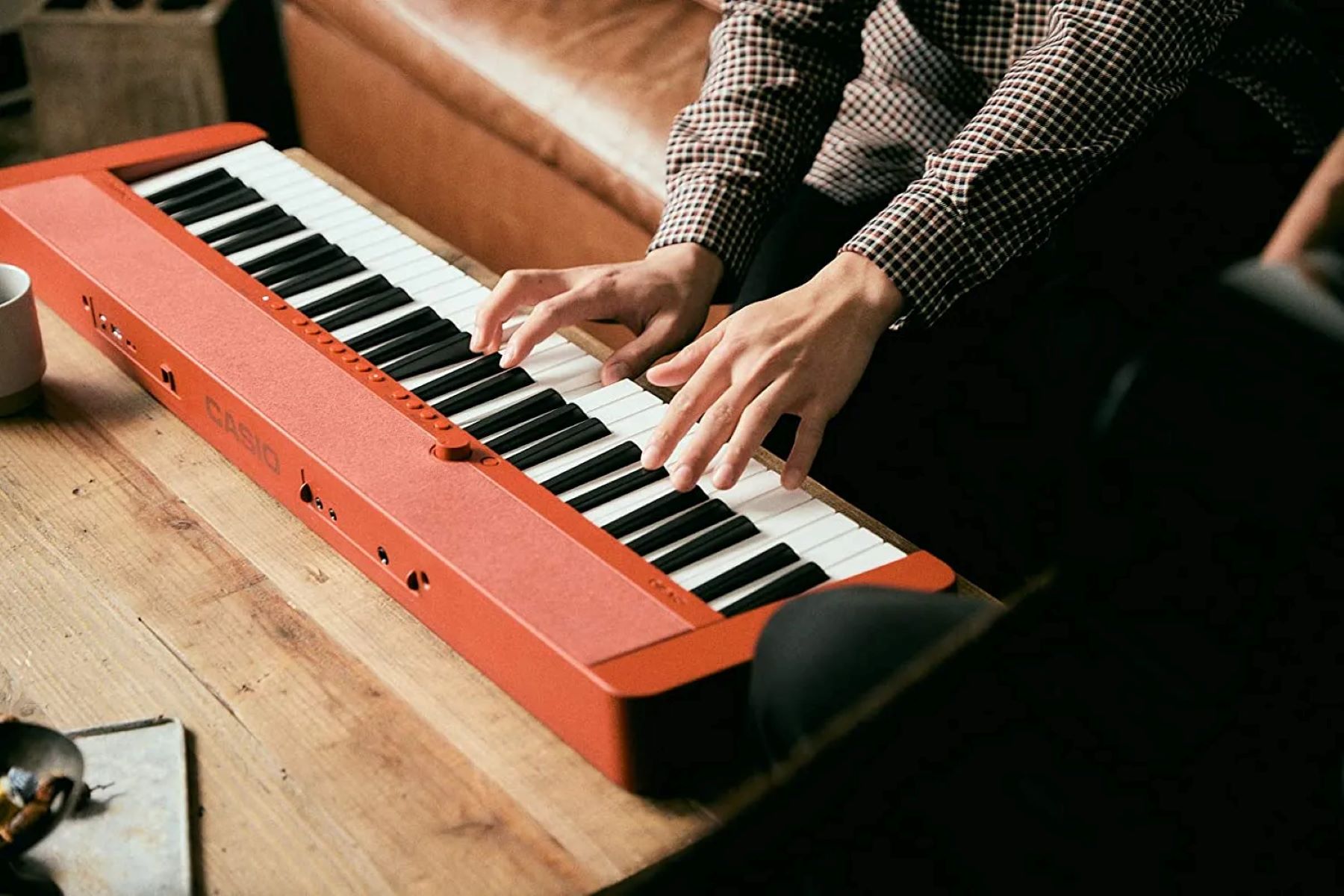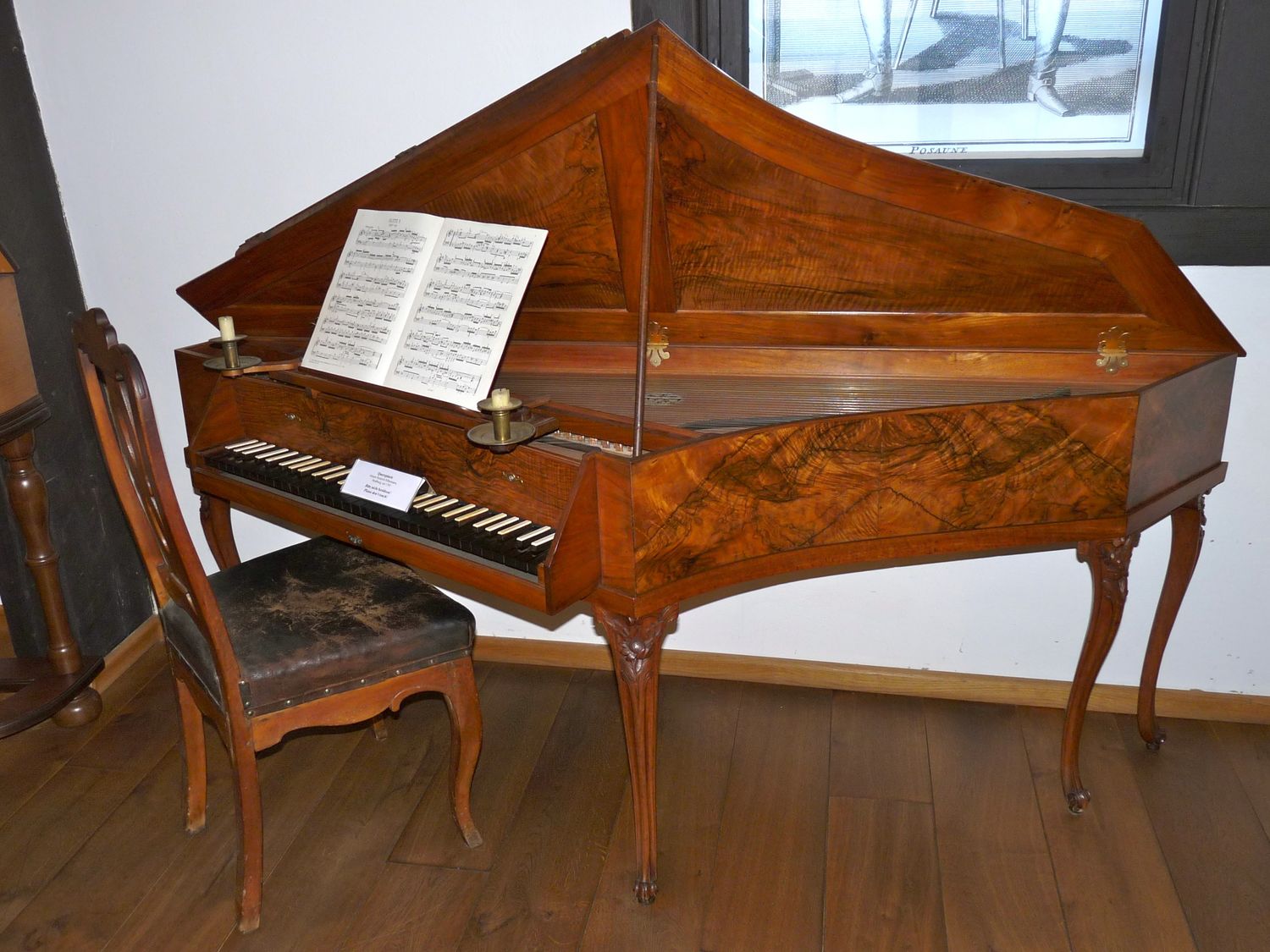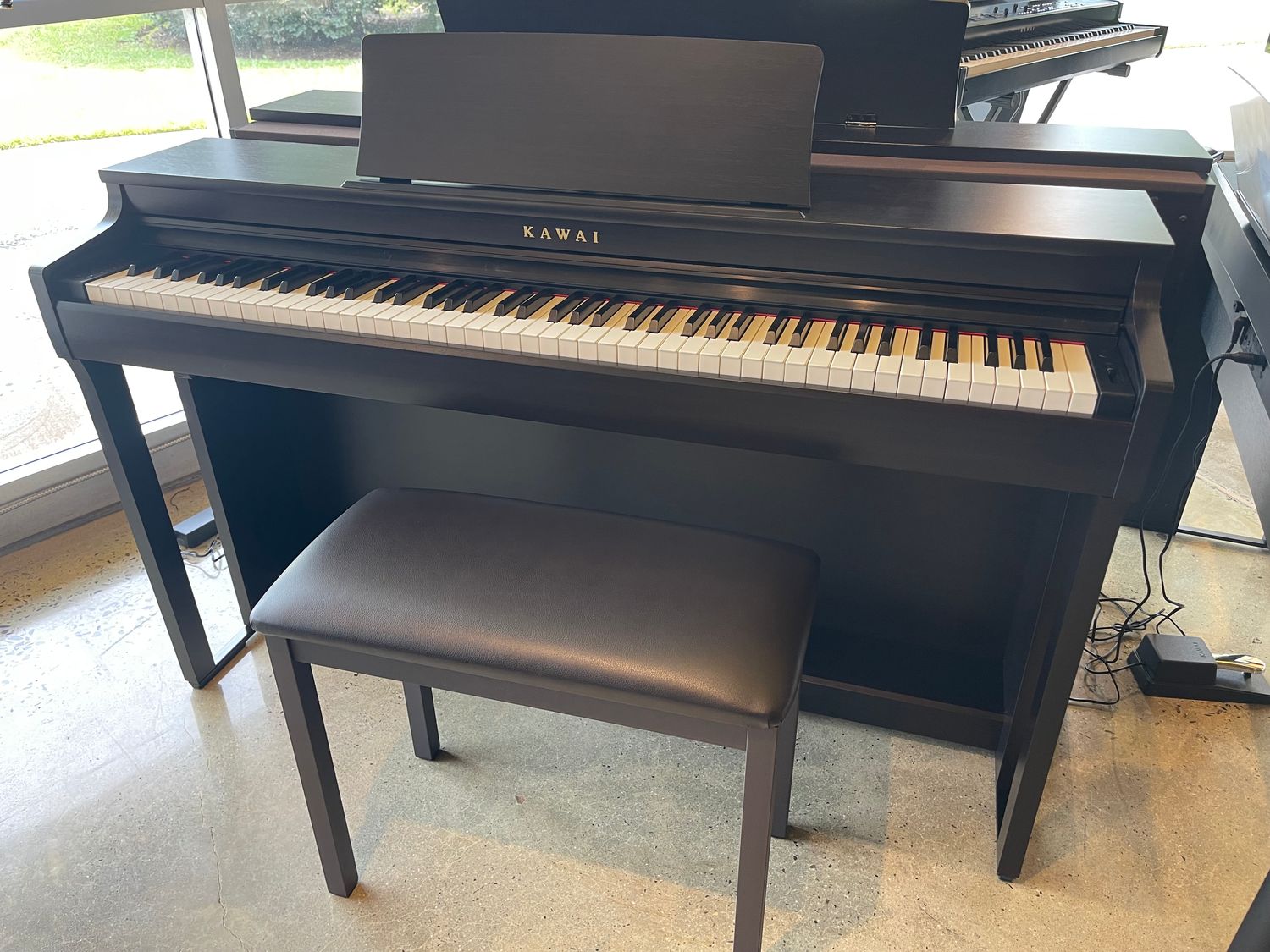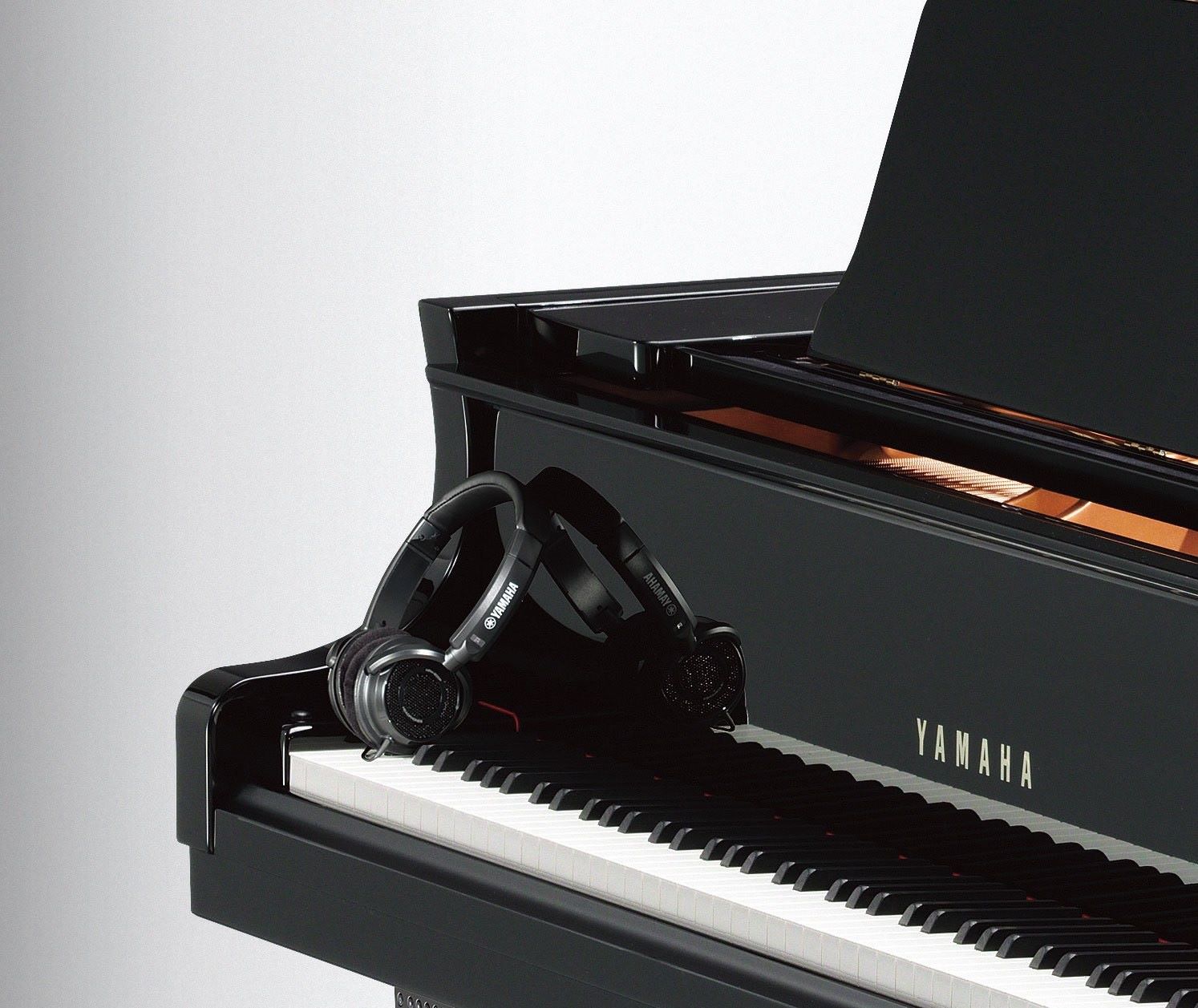Home>Instruments>Piano>What Is A Prepared Piano


Piano
What Is A Prepared Piano
Published: February 11, 2024
Discover the unique sound of a prepared piano and how it can transform traditional piano music. Learn about the techniques and famous compositions featuring the prepared piano. Explore the possibilities of this unconventional approach to playing the piano.
(Many of the links in this article redirect to a specific reviewed product. Your purchase of these products through affiliate links helps to generate commission for AudioLover.com, at no extra cost. Learn more)
Table of Contents
Introduction
Introduction
The prepared piano is a captivating and innovative musical instrument that has left an indelible mark on the world of contemporary music. By altering the internal components of a traditional piano, musicians can produce a diverse array of unconventional sounds, textures, and timbres. This unique approach to piano playing has opened up a realm of creative possibilities, allowing artists to explore new sonic landscapes and push the boundaries of musical expression.
The concept of preparing a piano involves inserting various objects, such as rubber, screws, or paper, between the strings or hammers of the instrument. This process transforms the piano into a hybrid percussion-string instrument, giving rise to a rich tapestry of tones that deviate from the instrument's conventional sound. The prepared piano has become a symbol of artistic experimentation and has been embraced by composers and performers seeking to break free from traditional norms and conventions.
The history of the prepared piano is rich and multifaceted, with its origins dating back to the early 20th century. Over the years, this unconventional approach to piano playing has garnered attention and acclaim, inspiring a diverse range of compositions and captivating audiences with its distinct and evocative sounds. As we delve into the world of the prepared piano, we will explore its origins, techniques, notable compositions, and the influential performers who have embraced this innovative instrument. Join us on a journey through the captivating realm of the prepared piano, where tradition meets innovation, and musical boundaries are redefined.
What is a Prepared Piano
At its core, a prepared piano is a traditional acoustic piano that has been modified by placing various objects on or between its strings and hammers. These objects can include rubber, paper, metal, or plastic, and they alter the timbre and resonance of the instrument, producing a diverse range of percussive and ethereal sounds that deviate from the piano’s standard tonal palette.
By inserting these objects, the piano’s strings are muted or altered, and the hammers’ striking points are shifted, resulting in a transformed sonic character. This unconventional approach to piano modification gives rise to a myriad of unique textures, resonances, and timbres, expanding the instrument’s sonic possibilities and offering a fresh avenue for musical expression.
The prepared piano embodies a spirit of experimentation and innovation, inviting composers and performers to explore uncharted musical territories. It blurs the line between traditional keyboard instruments and percussion, creating a hybrid entity that defies categorization. The prepared piano’s ability to evoke an otherworldly atmosphere and produce unconventional sounds has made it a compelling choice for avant-garde and contemporary composers seeking to push the boundaries of conventional music.
Furthermore, the prepared piano’s distinct timbral qualities have enabled it to become a versatile tool for sonic experimentation in various genres, including contemporary classical music, avant-garde jazz, experimental electronic music, and film scoring. Its ability to conjure evocative and unexpected sonic textures has captivated the imagination of musicians and audiences alike, cementing its status as a truly innovative and influential musical instrument.
History of Prepared Piano
The history of the prepared piano can be traced back to the early 20th century and is closely associated with the pioneering work of composer John Cage. In 1940, Cage introduced the concept of prepared piano in his composition titled Sonatas and Interludes, which marked a significant milestone in the instrument’s evolution. Cage’s innovative approach involved placing an assortment of objects, such as screws, bolts, and rubber strips, on the strings of the piano, thereby altering its sonic characteristics and expanding its tonal palette.
Cage’s exploration of the prepared piano opened up new avenues for musical experimentation and challenged traditional notions of composition and performance. His radical approach to manipulating the piano’s sound established a foundation for future generations of composers and performers to explore unconventional techniques and push the boundaries of sonic expression.
Following Cage’s groundbreaking work, the prepared piano gained traction in avant-garde and experimental music circles, captivating the imagination of composers seeking to break free from established norms. The instrument’s ability to produce an eclectic array of percussive and resonant sounds made it a compelling choice for artists looking to infuse their compositions with innovative textures and timbres.
Over the decades, the prepared piano has continued to evolve, finding its place in a diverse range of musical genres and styles. Its influence has extended beyond the realm of classical music, permeating contemporary jazz, electronic music, and avant-garde sound art. As a result, the prepared piano has become a symbol of artistic innovation and a testament to the boundless creativity that can emerge from reimagining traditional instruments.
Today, the legacy of the prepared piano lives on, inspiring composers and performers to embrace unconventional approaches to music-making and explore the limitless sonic possibilities that this modified instrument offers. Its rich history and ongoing relevance in the world of contemporary music solidify its status as a groundbreaking and enduring musical innovation.
Notable Prepared Piano Compositions
The realm of prepared piano music is adorned with a plethora of influential compositions that have left an indelible mark on the world of contemporary music. These works showcase the expressive potential and captivating allure of the prepared piano, offering a glimpse into the innovative sonic landscapes that composers have sculpted through this unconventional instrument.
1. “Sonatas and Interludes” by John Cage: This seminal work, composed between 1946 and 1948, stands as a cornerstone of the prepared piano repertoire. Consisting of 16 pieces, the composition explores a diverse array of timbres and textures, showcasing the transformative power of prepared piano techniques.
2. “Amores” by John Cage: Composed in 1943, “Amores” features a prepared piano alongside percussion instruments, creating a mesmerizing tapestry of rhythmic and textural intricacies. Cage’s innovative use of prepared piano techniques in this composition exemplifies his pioneering approach to redefining the instrument’s sonic possibilities.
3. “The Banshee” by Henry Cowell: Written in 1925, this haunting and evocative composition for prepared piano employs techniques such as plucking and muting the strings to produce eerie and ethereal sounds. “The Banshee” exemplifies Cowell’s experimental spirit and his exploration of unconventional piano timbres.
4. “Suite for Toy Piano” by John Cage: While not a prepared piano composition per se, this work for toy piano, composed in 1948, embodies Cage’s fascination with unconventional instruments and alternative approaches to sound production. The piece showcases the playful and whimsical qualities of the toy piano, reflecting Cage’s enduring commitment to sonic innovation.
5. “Prepared Piano Concerto” by George Antheil: Antheil’s pioneering “Prepared Piano Concerto,” composed in 1923, predates Cage’s explorations of prepared piano techniques. This early foray into prepared piano composition demonstrates Antheil’s daring experimentation with altering the piano’s sound through mechanical preparations, foreshadowing the future evolution of the instrument.
These compositions represent a mere glimpse into the diverse and captivating world of prepared piano music. They stand as testaments to the boundless creativity and innovation that have shaped the prepared piano repertoire, inspiring generations of composers and performers to embrace the instrument’s unconventional sonic potential and push the boundaries of musical expression.
Techniques for Preparing a Piano
Preparing a piano involves a meticulous and creative process of altering the instrument’s internal components to produce unconventional sounds and textures. This transformative practice opens up a world of sonic possibilities, allowing composers and performers to sculpt a diverse array of timbres and resonances that transcend the instrument’s traditional tonal palette. The following techniques are commonly employed in preparing a piano:
1. Inserting Objects: One of the fundamental techniques involves inserting various objects between the strings and hammers of the piano. These objects, which can include rubber, screws, bolts, paper, and plastic, alter the strings’ vibrations and the hammers’ striking points, resulting in a broad spectrum of percussive and resonant sounds.
2. Muting and Dampening: By strategically placing materials on the strings, such as rubber wedges or strips, the piano’s resonance can be muted or altered, producing muted percussive effects and unique timbral variations. Dampening the strings with objects like felt or cloth can also yield subdued and ethereal tones.
3. Altering Hammer Mechanisms: Adjusting the hammers’ mechanisms by inserting objects or modifying their composition can transform the way they strike the strings, leading to a diverse range of percussive and resonant articulations. This technique expands the piano’s sonic palette and introduces new expressive possibilities.
4. String Preparations: Modifying the strings themselves through techniques such as weaving objects through them, applying adhesives, or altering their tension can produce unconventional timbres and resonances, enriching the instrument’s sonic vocabulary and offering a wealth of textural nuances.
5. Exploring Extended Techniques: In addition to traditional preparations, performers and composers often explore extended techniques, such as plucking, bowing, or striking the prepared strings directly, further expanding the sonic potential of the instrument and unleashing a diverse array of unconventional sounds.
These techniques exemplify the inventive and experimental nature of preparing a piano, offering a glimpse into the myriad ways in which the instrument’s sonic characteristics can be reimagined and expanded. By embracing these innovative techniques, musicians have the opportunity to embark on a sonic journey that transcends traditional piano playing, unlocking a world of boundless creativity and expressive potential.
Famous Prepared Piano Performers
The world of prepared piano performance has been enriched by a host of influential musicians who have demonstrated a remarkable command of this unconventional instrument, pushing the boundaries of sonic exploration and musical expression. These performers have captivated audiences with their innovative approaches and virtuosic mastery of the prepared piano, leaving an indelible mark on the contemporary music landscape. Here are some of the most notable prepared piano performers:
1. Hauschka (Volker Bertelmann): Renowned for his inventive and evocative prepared piano compositions and performances, Hauschka has garnered acclaim for his masterful manipulation of the instrument’s unconventional sounds. His exploratory approach to prepared piano playing has captivated audiences worldwide, showcasing the instrument’s expressive potential in diverse musical contexts.
2. Margaret Leng Tan: A trailblazing performer and advocate for prepared piano music, Margaret Leng Tan has established herself as a leading figure in the realm of avant-garde and experimental music. Her virtuosity and imaginative use of prepared piano techniques have redefined the instrument’s sonic possibilities, earning her widespread recognition as a pioneering prepared piano performer.
3. Stephen Scott: Widely acclaimed for his groundbreaking contributions to prepared piano performance, Stephen Scott has pushed the boundaries of the instrument through his innovative compositions and mesmerizing live performances. His inventive approach to preparing the piano and his captivating command of its unconventional sounds have solidified his reputation as a visionary in the world of contemporary music.
4. John Cage: As the trailblazing composer who introduced the concept of prepared piano to the world, John Cage’s influential performances and compositions have left an enduring legacy in the realm of avant-garde music. His pioneering spirit and innovative use of prepared piano techniques have inspired generations of performers to embrace the instrument’s transformative potential and explore new frontiers of sonic expression.
5. Nils Frahm: A visionary pianist and composer, Nils Frahm has captivated audiences with his mesmerizing performances that showcase the prepared piano’s evocative and ethereal qualities. His experimental approach to piano preparation and his ability to conjure emotive and immersive sonic landscapes have established him as a leading figure in the contemporary music scene.
These performers exemplify the diverse and captivating approaches to prepared piano performance, each contributing to the instrument’s rich tapestry of sonic innovation and pushing the boundaries of traditional piano playing. Their visionary artistry and virtuosic command of the prepared piano have elevated the instrument to new heights, inspiring a new generation of musicians to embrace its unconventional allure and explore the limitless possibilities it offers for musical expression.
Conclusion
The world of the prepared piano is a captivating realm where tradition meets innovation, and the boundaries of sonic exploration are continually redefined. From its early origins in the pioneering work of composers like John Cage to its enduring influence on contemporary music, the prepared piano has emerged as a symbol of artistic experimentation and sonic innovation.
Through the meticulous placement of objects and the creative manipulation of the piano’s internal mechanisms, performers and composers have unlocked a wealth of unconventional sounds, textures, and timbres, expanding the instrument’s sonic vocabulary and offering a fresh avenue for musical expression. The prepared piano’s ability to evoke ethereal atmospheres, produce percussive articulations, and conjure unexpected sonic textures has captivated the imagination of musicians and audiences alike, establishing it as a truly innovative and influential musical instrument.
Notable compositions by pioneering figures such as John Cage and Henry Cowell have showcased the expressive potential of the prepared piano, while virtuosic performers like Hauschka and Margaret Leng Tan have demonstrated the instrument’s boundless sonic possibilities through their captivating live performances and innovative recordings. Their visionary artistry and commitment to pushing the boundaries of traditional piano playing have elevated the prepared piano to new heights, inspiring a new generation of musicians to embrace its unconventional allure and explore the limitless possibilities it offers for musical expression.
As the legacy of the prepared piano continues to unfold, it serves as a testament to the enduring spirit of musical exploration and the unbounded creativity that emerges from reimagining traditional instruments. Its influence extends across genres and styles, permeating contemporary classical music, avant-garde jazz, experimental electronic music, and beyond, reaffirming its status as a groundbreaking and enduring musical innovation.
In the ever-evolving landscape of contemporary music, the prepared piano stands as a symbol of artistic ingenuity and a source of inspiration for composers and performers seeking to chart new sonic territories and redefine the possibilities of musical expression. As we venture into the future, the prepared piano remains a captivating canvas for sonic innovation, inviting musicians to embark on a journey of boundless creativity and embrace the transformative power of unconventional sound.


